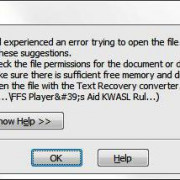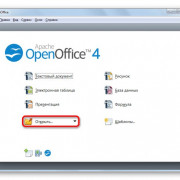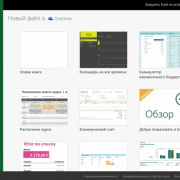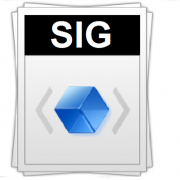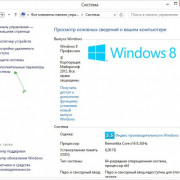Проверка сайта на валидность на сервисе validator.w3.org
Содержание:
- Функции
- Custom validators¶
- Проверяем заполнено поле или нет
- Инструменты для валидации веб-сайта
- Сайты проверки валидации
- W3C Markup Validator Roadmap
- Sanitizers
- Как проверить код на валидность
- Contributing
- Documentation for the RDF validation service
- Source code and package availabilityfor the W3C Markup Validator
- Быть или не быть
- User support
- W3C’s Validators dissemination
- Technical improvements
- Пользование сервисом проверки W3C Validator Suite
Функции
CSS HTML Validator включает в себя редактор HTML , валидатор для HTML , XHTML , полиглот разметки , CSS , PHP и JavaScript ( с помощью JSLint или JSHint ), проверки ссылок (найти мертвые и неработающие ссылки ), проверку орфографии , доступность проверки и поисковую оптимизацию (SEO) проверка. Встроенный веб-браузер позволяет разработчикам просматривать веб-страницы, пока страницы проверяются автоматически.
Поскольку документы проверяются локально и не загружаются через Интернет на сервер для проверки, проверки выполняются относительно быстро, а безопасность и конфиденциальность повышаются.
Инструмент Batch Wizard, включенный в некоторые выпуски программного обеспечения, может проверять целые веб-сайты, части веб-сайтов или список локальных веб-документов. Batch Wizard создает отчеты в формате HTML или XML. Отчеты можно просматривать с помощью стандартного веб-браузера.
Средство проверки доступности включает поддержку поправки к разделу 508 Закона о реабилитации 1973 года и рекомендаций по обеспечению доступности веб-контента (как WCAG 1.0, так и WCAG 2.0 / 2.1).
Используя версию HTML Tidy с поддержкой HTML5 и Pretty Print & Fix Tool, CSS HTML Validator может автоматически исправить некоторые общие проблемы с документами HTML и XHTML . Однако некоторые проблемы не могут быть исправлены (или исправлены правильно) с помощью автоматизированных инструментов и требуют ручного просмотра и ремонта.
Custom validators¶
We will step through the evolution of writing a length-checking validator
similar to the built-in validator, starting from a
case-specific one to a generic reusable validator.
Let’s start with a simple form with a name field and its validation:
class MyForm(Form):
name = StringField('Name', InputRequired()])
def validate_name(form, field):
if len(field.data) > 50
raise ValidationError('Name must be less than 50 characters')
Above, we show the use of an to do
validation of a single field. In-line validators are good for validating
special cases, but are not easily reusable. If, in the example above, the
name field were to be split into two fields for first name and surname, you
would have to duplicate your work to check two lengths.
So let’s start on the process of splitting the validator out for re-use:
def my_length_check(form, field):
if len(field.data) > 50
raise ValidationError('Field must be less than 50 characters')
class MyForm(Form):
name = StringField('Name', InputRequired(), my_length_check])
All we’ve done here is move the exact same code out of the class and as a
function. Since a validator can be any callable which accepts the two
positional arguments form and field, this is perfectly fine, but the validator
is very special-cased.
Instead, we can turn our validator into a more powerful one by making it a
factory which returns a callable:
def length(min=-1, max=-1):
message = 'Must be between %d and %d characters long.' % (min, max)
def _length(form, field):
l = field.data and len(field.data) or
if l < min or max != -1 and l > max
raise ValidationError(message)
return _length
class MyForm(Form):
name = StringField('Name', InputRequired(), length(max=50)])
Now we have a configurable length-checking validator that handles both minimum
and maximum lengths. When is passed in your validators list,
it returns the enclosed _length function as a closure, which is used in the
field’s validation chain.
This is now an acceptable validator, but we recommend that for reusability, you
use the pattern of allowing the error message to be customized via passing a
parameter:
class Length(object):
def __init__(self, min=-1, max=-1, message=None):
self.min = min
self.max = max
if not message
message = u'Field must be between %i and %i characters long.' % (min, max)
self.message = message
def __call__(self, form, field):
l = field.data and len(field.data) or
if l < self.min or self.max != -1 and l > self.max
raise ValidationError(self.message)
length = Length
In addition to allowing the error message to be customized, we’ve now converted
the length validator to a class. This wasn’t necessary, but we did this to
illustrate how one would do so. Because fields will accept any callable as a
validator, callable classes are just as applicable. For complex validators, or
using inheritance, you may prefer this.
We aliased the class back to the original name in the
above example. This allows you to keep API compatibility as you move your
validators from factories to classes, and thus we recommend this for those
writing validators they will share.
Setting flags on the field with validators
Sometimes, it’s useful to know if a validator is present on a given field, like
for use in template code. To do this, validators are allowed to specify flags
which will then be available on the . Some of the built-in validators such as
already do this.
To specify flags on your validator, set the attribute on your
validator. When the Field is constructed, the flags with the same name will be
set to True on your field. For example, let’s imagine a validator that
validates that input is valid BBCode. We can set a flag on the field then to
signify that the field accepts BBCode:
# class implementation
class ValidBBCode(object):
field_flags = ('accepts_bbcode', )
pass # validator implementation here
# factory implementation
def valid_bbcode():
def _valid_bbcode(form, field):
pass # validator implementation here
_valid_bbcode.field_flags = ('accepts_bbcode', )
return _valid_bbcode
Then we can check it in our template, so we can then place a note to the user:
{{ field(rows=7, cols=70) }}
{% if field.flags.accepts_bbcode %}
<div class="note">This field accepts BBCode formatting as input.</div>
{% endif %}
Some considerations on using flags:
-
Flags can only set boolean values, and another validator cannot unset them.
-
If multiple fields set the same flag, its value is still True.
-
Flags are set from validators only in , so inline
validators and extra passed-in validators cannot set them.
Проверяем заполнено поле или нет
Мы хотим провернуть фокус с :valid и :invalid, но мы не хотим опережать события и считать поле невалидным до того, как оно было заполнено.
Есть ли CSS-селектор для проверки пустоты поля? Вообще-то нет! Вы можете подумать на :empty, но ошибетесь. Этот псевдокласс предназначен для проверки ситуаций когда элемент <p></p> не содержит в себе ничего. Поля ввода и так пусты по умолчанию.
Трюк в том, чтобы проверить поле на видимость атрибута placeholder:
CSSinput:not(:placeholder-shown) { }
Мы не использовали плейсхолдер в нашем примере, но это правило сработает, если мы зададим значение из одного пробела:
<input placeholder=” “>
:placeholder-shown супер полезен для нас! Это в целом секретный селектор, позволяющий проверить, есть ли в поле значение или нет.
IE и Firefox пока его, что немного осложняет задачу. Обычно спасителем является новая функция @supports, но…
CSS/* Это не сработает */@supports (input:placeholder-shown) { input:not(:placeholder-shown) { }}
Вы не можете использовать @supports для селекторов, только для свойства/значения (например @supports (display: flex)).
Проверить плейсхолдер при помощи JavaScript довольно легко:
JavaScriptvar i = document.createElement(‘input’);if (‘placeholder’ in i) { }
Но это не кажется самым простым способом имитации :placeholder-shown. Поэтому…возможно, просто стоит подождать поддержки всеми браузерами.
Представим, что поддержка уже повсеместная и посмотрим, как это будет выглядеть…
SCSSform { > div { > input, > input, > input { // Когда поле ввода… // 1. НЕ пустое // 2. НЕ в фокусе // 3. НЕ валидно &:invalid:not(:focus):not(:placeholder-shown) { // Покажем напоминание background: pink; & + label { opacity: 0; } } // Когда в невалидное поле устанавливается фокус (и оно по прежнему не пустое) &:invalid:focus:not(:placeholder-shown) { // Покажем более настойчивое напоминание & ~ .requirements { max-height: 200px; padding: 0 30px 20px 50px; } } } // <input> ~ // <label> ~ // <div class=”requirements”> .requirements { padding: 0 30px 0 50px; color: #999; max-height: 0; transition: 0.28s; overflow: hidden; color: red; font-style: italic; } }}
Инструменты для валидации веб-сайта
W3C markup validation service (он же validator w3 org)
Этот сервис поможет проверить валидность разметки веб-документов в форматах HTML, XHTML, SMIL, MathML и т. д. И позволит исключить необходимость использования дополнительных инструментов.
Какие проверки осуществляются:
- Анализ синтаксиса и стилей;
- Проверка сайта на ошибки онлайн.
CSS validator
Позволяет проверить код CSS и (X)HTML-документы с таблицами. Если нужно валидировать CSS, встроенный в (X)HTML-код, то сначала нужно будет проверить разметку.
Checklink
Проверяет ссылки и анкоры на отдельных веб-страницах или на целом сайте. Этот инструмент позволяет выявить проблемы, связанные со ссылками, анкорами и объектами в веб-странице, CSS-таблицами и т. д. Сначала убедитесь, что в проверяемых документах используется валидная (X)HTML-разметка и CSS-код.
Feed
Бесплатный сервис для W3C-валидации ленты рассылок (Feed), который позволяет проверить синтаксис Atom или RSS. Вы можете проверить сайт на ошибки по URL или с помощью прямого ввода кода.
Mobile checker
Инструмент позволяет проводить различные тесты веб-страниц для определения того, насколько они адаптированы под мобильные устройства. Тесты описаны в спецификации mobileOK Basic Tests 1.0. Веб-страница считается адаптированной, если проходит сразу все тесты.
HTML Validator
HTML Validator от WDG по функционалу напоминает сервис валидации от W3C. Основные отличия были исключены с выходом обновленной версии W3C-валидатора.
Watson’s site validation check
Валидатор HTML онлайн Dr. Watson – бесплатный сервис, который позволяет проверить сайт на ошибки онлайн. Укажите URL-адрес страницы, которую необходимо проверить, и Watson сразу же сделает ее копию. Он также умеет исследовать множество других аспектов сайта: валидность ссылок, скорость скачивания, оптимизация под поисковые системы и т. д. Многие функции совмещены в одну. Если требуется решение «все в одном», то этот инструмент вам точно пригодится.
Какие проводятся проверки:
- Скорость загрузки страницы;
- Анализ синтаксиса и стилей;
- Подсчет количества слов;
- Проверка орфографии;
- Проверка ссылок;
- Уровень оптимизации под поисковые системы;
- Проверка входящих ссылок;
- Проверка исходного кода.
XML well checker and validator
Эту форму можно использовать для проверки XML-документов на валидность. Инструмент проверяет и все подкрепленные внешние файлы на наличие синтаксических ошибок и находит лишние пробелы.
Robots checker
Инструмент позволяет проверить сайт на ошибки кода файла Robots.txt. Несмотря на то, что он может распознать как ошибки и некоторые ваши исключения, их тоже не мешало бы проверить. Простой, но мощный и многофункциональный инструмент.
Сайты проверки валидации
validator.w3.org

W3C (World Wide Web Consortium) – это группа, которая разрабатывает все стандарты для веб-технологий, поэтому имеет смысл использовать только данный валидатор для проверки правильности вашего HTML. Проверяемый файл страницы может быть проверен онлайн или загружен, так же валидатор может отображать свой отчет в нескольких форматах – с рекомендациями, в виде схемы, с рекомендациями и т.д..
jigsaw.w3.org

W3C предлагает инструмент для проверки CSS, который также проверит вашу разметку на наличие потенциальных ошибок и предупреждений. У вас также есть возможность установить различные профили CSS, указать среду, для которой была создана таблица стилей, и контролировать объем информации, отображаемой в отчете.
Validome.org

Validome позволяет веб-мастерам проверять свой синтаксис с помощью надежной и высокоскоростной службы проверки в соответствии с действующими официальными стандартами. Действительный код очень полезен, чтобы избежать проблем с различными браузерами и выпусками.
W3C Markup Validator Roadmap
This page holds the development roadmap for the W3C Markup
Validation Service.
- For a list open bugs and detailed feature, we now use
Bugzilla, which can be searched
by specific milestone version numbers. - This roadmap only gives a high-level overview of what each generation of the
validator changed from the others.
For a detailed list of features and changes in past releases, see the
News page. - If you would like to discuss this roadmap, or request new features, please join the
www-validator
mailing list.
High-Level Objectives
- Provide the web with a one-stop service for Web Quality check
- Help raise quality for (m)any kind(s) of Web content
- Build a positive culture of Web Quality
- Future-proof our services (new formats, new usage)
- Leverage Communities energy
- Remain the trusted source by professionals
- Find the right balance between accuracy and user-friendliness
Roadmap
Multi-engine validator
The current validator is mostly based on an DTD parser, with an XML parser used only for some checks.
It also plugs into an html5 parser for the validation of HTML5 content. In the future, other engines
should be used to check compound XML documents (with NVDL+relax, XML Schema, Schematron — using e.g the relaxed engine)
The following flowchart describes the validation engine architecture, as it is now, and as we envision it in the near future.
(follow link to enlarge, or download the vector-based
graffle,
PDF or
SVG version)
Milestones
@@ TODO @@ add these as Bugzilla entries
-
Interface with an NVDL+RelaxNG engine for validation of compound XML documents (coding the interface will be similar to the one
done for hTML5 engine) -
Choose the right NVDL+RelaxNG engine. relaxed and validator.nu provide such capability, and of course there is the option to roll our own (jing, etc).
-
Change check code to send multiple-namespace XML documents to NVDL+RelaxNG engine
-
Interface with the feed validator, RDF validator and CSS validator programatically (instead of redirecting, as done today)
Mulitilingual tool
The Markup Validator receives 1M requests per day, and is only in English. Making it multiligual
would make the tool easier to use for web developers and designers worldwide. Although this may be technically tricky
(given the number of message/engine sources), the community would be very excited in participating in the translation effort.
Site-wide services
The markup validator currently checks a single page. Some companion software (such as the log validator)
could be made into a web service to provide crawling, batch validation, scheduled checks etc.
Check beyond markup
This may be in the roadmap for Unicorn rather than the markup validator, but it fits in the «long-term»
vision of developing the W3C Web Quality services. Checking of RDDL, RDFa, microformats and other rich markup are in scope.
Many other checks could be added to the validators, such as:
- document cacheability
- spell checking
- semantic extraction
- accessibility evaluation
Less finger pointing, more problem solving
Most of our tools, and especially the «star» HTML validator,
have a binary «valid/invalid» way of presenting their results. While this is useful for some, it tends to make people look away
from the «big picture» of web quality. A new one-stop quality checker could help bring a paradigm shift by showing diverse
aspects of web quality, while systematically suggesting solutions for every problem. This would involve working with designers
to find ways to present aggregated quality information in a clear and positive manner.
- 0.8.x
- The 0.8.0 release sees the validator code reorganized around a more modular architecture, adding better XML checking capabilities. In 0.8.5, HTML5 checking capabilities were added by interfacing with the validator.nu engine.
- 0.7.x
- The 0.7.0 release reorganized the validator to use templates, making it easier to produce different outputs (hence the development of an API). 0.7.0 through 0.7.4 included mostly bug fixes and documentation updates.
- 0.6.x
- The 0.6.0 release, in 2002, kicked in a new phase of open source development for the validator,
including a number of bug fixes. 0.6.0 through 0.6.7 included mostly bug fixes and documentation updates. - Versions Prior to 0.6.0
- Versioning up to version 0.5.x was only done as a development mechanism, and
the validator was not following a strict release cycle.
Sanitizers
Here is a list of the sanitizers currently available.
| Sanitizer | Description |
|---|---|
| blacklist(input, chars) | remove characters that appear in the blacklist. The characters are used in a RegExp and so you will need to escape some chars, e.g. . |
| escape(input) | replace , , , , and with HTML entities. |
| ltrim(input ) | trim characters from the left-side of the input. |
| normalizeEmail(email ) | canonicalizes an email address. (This doesn’t validate that the input is an email, if you want to validate the email use isEmail beforehand) is an object with the following keys and default values:
|
| rtrim(input ) | trim characters from the right-side of the input. |
| stripLow(input ) | remove characters with a numerical value < 32 and 127, mostly control characters. If is , newline characters are preserved ( and , hex and ). Unicode-safe in JavaScript. |
| toBoolean(input ) | convert the input string to a boolean. Everything except for , and returns . In strict mode only and return . |
| toDate(input) | convert the input string to a date, or if the input is not a date. |
| toFloat(input) | convert the input string to a float, or if the input is not a float. |
| toInt(input ) | convert the input string to an integer, or if the input is not an integer. |
| trim(input ) | trim characters (whitespace by default) from both sides of the input. |
| unescape(input) | replaces HTML encoded entities with , , , , and . |
| whitelist(input, chars) | remove characters that do not appear in the whitelist. The characters are used in a RegExp and so you will need to escape some chars, e.g. . |
XSS Sanitization
XSS sanitization was removed from the library in 2d5d6999.
For an alternative, have a look at Yahoo’s xss-filters library or at DOMPurify.
Как проверить код на валидность
Не нужно вычитывать код и считать символы — для этого есть сервисы и инструменты проверки валидности HTML онлайн.
Что они проверяют:
- СинтаксисСинтаксические ошибки: пропущенные символы, ошибки в написании тегов.
- Вложенность тэговНезакрытые и неправильно закрытые теги. По правилам теги закрываются также, как их открыли, но в обратном порядке. Частая ошибка — нарушенная вложенность .
- DTD (Document Type Definition)Соответствие кода указанному DTD, правильность названий тегов, вложенности, атрибутов. Наличие пользовательских тегов и атрибутов — то, чего нет в DTD, но есть в коде.
Обычно сервисы делят результаты на ошибки и предупреждения. Ошибки — опечатки в коде, пропущенные или лишние символы, которые скорее всего создадут проблемы. Предупреждения — бессмысленная разметка, лишние символы, какие-то другие ошибки, которые скорее всего не навредят сайту, но идут вразрез с принятым стандартом.
Валидаторы не всегда правы — некоторые ошибки не мешают браузерам воспринимать код корректно, зато, к примеру, минификация сокращает длину кода, удаляя лишние пробелы, которые не влияют на его отображение.
Поэтому анализируйте предложения сервисов по исправлениям и ориентируйтесь на здравый смысл.
Перед исправлением ошибок не забудьте сделать резервное копирование. Если вы исправите код, но что-то пойдет не так и он перестанет отображаться, как должен, вы сможете откатить все назад.
Contributing
In general, we follow the «fork-and-pull» Git workflow.
- Fork the repo on GitHub
- Clone the project to your own machine
- Work on your fork
- Make your changes and additions
- Most of your changes should be focused on and folders and/or .
- Files such as , and files in folder are autogenerated when running tests () and need not to be changed manually.
- Change or add tests if needed
- Run tests and make sure they pass
- Add changes to README.md if needed
- Make your changes and additions
- Commit changes to your own branch
- Make sure you merge the latest from «upstream» and resolve conflicts if there is any
- Repeat step 3(3) above
- Push your work back up to your fork
- Submit a Pull request so that we can review your changes
Documentation for the RDF validation service
About the Service
This RDF validation service is based on Another RDF Parser (ARP).
It currenlty uses version 2-alpha-1. ARP was
created and is maintained by Jeremy
Carroll at HP-Labs in
Bristol.
This means that the service now supports the issued by the RDF Core Working Group, including datatypes. It no longer supports
deprecated elements and attributes of the standard RDF Model and
Syntax Specification and will issue warnings or errors when encountering
them. See RDF Issue
Tracking for more information. The service does not do any RDF Schema
Specification validation.
This W3C service was created by Nokia’s Art Barstow (a former W3C Team
member). The internationalization was done by Martin Dürst. It was previously
maintained by Emmanuel Pietriga (another former W3C Team member), who
also implemented the IsaViz plug-in. It is
currently maintained jointly by Eric
Prud’hommeaux (eric@w3.org), Ryan Lee (ryanlee@w3.org) and Ted Guild (ted@w3.org).
Note that other are available.
Using this service
Note: when parsing large RDF files, requesting Triples Only instead of Triples and Graph will significantly shorten the response time of this service.
Note: a new zoomable representation of the graph is available by selecting option IsaViz/ZVTM (Dynamic View) as the desired Graph Format. This Java applet is based on IsaViz and requires the Java Plug-in to be installed and properly configured for your browser.
Note: not all scripts and characters are supported in all graph formats. For
SVG output, you may have to change the font manually to match a font that
is available on your system.Note: image and DOT files are only saved on the W3C
RDF Validator site for 24 hours.
The graph is generated using version 1.8.9 of the AT&T Labs GraphViz open source
graph drawing software.
Feedback
Bug reports and detailed source-code related feedback are encouraged (as
are contributions of bug fixes and improvements!).
Bug reports relating to the parsing should be sent to Jeremy Carroll.
The W3C’s RDF Interest Group provides a public forum for discussion of RDF
applications, interfaces and related issues. See the RDF Interest Group Home Page page
for more information as well as the RDF IG mailing
list.
Servlet Source Code
http://dev.w3.org/cvsweb/java/classes/org/w3c/rdf/examples/ARPServlet.java
The servlet uses: ARP 2 thus it depends on Xerces 2 and SAX2
as documented at the ARP home page. The servlet also uses Apache’s
RE (Regexp) class.
What Happened to SiRPAC?
The W3C no longer maintains the SiRPAC parser. Here are some potentially
useful links if you are interested in SiRPAC:
- The last SiRPAC
JAR file created by the W3C - The SiRPAC
defect list for the above parser - The W3C’s CVS
Repository for SiRPAC (use the subdirs) - The Stanford
SiRPAC site
Source code and package availabilityfor the W3C Markup Validator
The W3C Markup Validator provides Perl/CGI/SGML/XML/DTD-based
validation of a variety of document types.
SGML and DTDs are older technologies that never found wide use on
the Web, so for checking of HTML documents using modern
technologies, you probably want to instead use the
W3C HTML Checker.
To do that,
- Download the
latest release version. - Read the
usage guide.
If for some reason you’d rather run a service based on the same source as
the W3C Markup Validator, this page provides the following information:
Installing from packages
Rather than trying to install and run an instance of the W3C from
the sources, it’s much easier to install one of a variety of
pre-built packages. The sections below provide information about
packages available for various systems.
Fedora/Red Hat RPM package
Fedora RPM packages of the validator are included in Fedora.
The name of the validator package is w3c-markup-validator,
use the standard automated package management tools of the
distribution (such as yum) to install it along with its
dependencies.
For Red Hat Enterprise Linux and derivative distributions, the
w3c-markup-validator package is available in
EPEL.
openSUSE/SUSE Linux RPM package
openSUSE/SUSE Linux RPM packages of the validator are available,
courtesy of Sierk Bornemann, at software.openSUSE.org,
<http://software.opensuse.org/>.
Starting with openSUSE 10.3, the latest stable validator package and all its
dependencies are included in the official stable openSUSE distribution.
The name of the validator package is w3c-markup-validator,
use the standard automated package management tools of the
distribution (such as YaST, zypper, smart,
apt4rpm or yum) to install it along with its
dependencies.
Additionally, you can also get these and other needed packages
from the openSUSE Software Repository at
<http://software.opensuse.org/package/w3c-markup-validator>
Debian GNU/Linux package
A Debian package is available, courtesy of Frédéric
Schütz.
Starting with Debian 3.1 («Sarge»), the package and all its
dependencies are included in the official Debian distribution, and
can be installed by running the command apt-get install
w3c-markup-validator as root.
Mac OS X Application
The Validator is also packaged as a standalone Mac OS X Application,
called Validator S.A.C., courtesy of Chuck Houpt.
Getting the source
The source code for the W3C
Markup Validation Service is available under the terms of the
W3C
Software License.
If you just want to glance at the code, or see its revision
history, you can
browse it
directly in Github.
The most interesting files are currently
a
CGI script called «check» that does pretty much everything,
and possibly also the
httpd.conf configuration file snippet for Apache.
Select the topmost revision numbers on these
pages to see the most recent revision of each file.
To actually install and run an instance of the W3C Markup Validator from
the sources, see the
installation manual.
Быть или не быть
Как уже было сказано, чтобы ответить на этот вопрос, достаточно найти мнения специалистов. В одном из интервью тему освещал Николас Закас, сотрудник Yahoo и, по совместительству, автор книги о JavaScript для разработчиков-профессионалов. К слову, я уже описывал лучшие способы изучения этого языка для новичков.
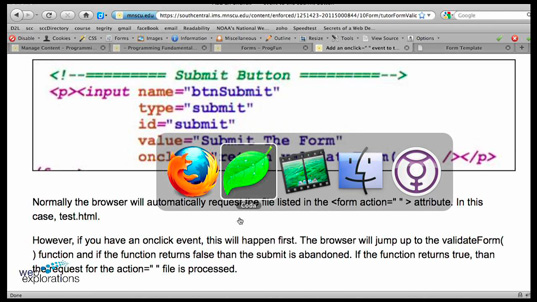
По его словам, основной аргумент в пользу валидности – это кроссбраузерность. Один и тот же сайт при наличии ошибок может отображаться по-разному в разных браузерах (обязательно прочтите о том, что делают и как работают браузеры).
Иными словами, вы можете тратить уйму времени на подбор интересного контента, уникальных картинок, а люди будут уходить. Просто потому, что в их любимом браузере ваш сайт отображается неправильно, некрасиво, там что-то не работает, визуально не отображается или отображается не так.
Есть у валидности и другие преимущества:
Стабильность. Сам по себе HTML-код характеризуется простой структурой, тем не менее в процессе увеличения объема документа в нем легко запутаться. И даже если в данный момент браузеры правильно отображают сайт с ошибкой, то в будущем, когда пройдут обновления, гарантии в качестве никто не даст. Тенденции
Во-первых, новые версии браузеров стараются обращать особое внимание на спецификации и отображать интернет-ресурсы с минимальными ошибками либо вообще без них. Во-вторых, XML никто не отменял
Этот язык используется для хранения и обмена данных. Он является следующей ступенью после HTML и ошибок не прощает. Хотите его освоить? Учитесь писать код правильно. Компактность, читабельность. Эти выгоды вы оцените при достижении определенной критической массы. Тогда для вас уменьшится объем кода, а для ваших читателей – скорость загрузки страницы.
В то же время валидный, но не интересный сайт не означает, что его полюбят пользователи и поисковики, и на это нужно также обращать внимание
User support
How to handle communication/feedback/questions from the community and what to to use (mailing list, issues, forum, stackoverflow…)
forum & mailing list are not competitors, just look at different goals.
Mailing lists, which we are using right now, are helpful for bug reporting, suggestions & technical questions. But now, when a young developer have some questions on results or don’t understand validators issues he go to ask on others platforms like stackoverflow etc etc….
I suggest to identify 3 categories:
- Bugs reports & suggestions
- Local installation
- Understanding of validator reports
Bugs reports & suggestions
- Centralize and make all current issues publicly available on GitHub alongside the project source code and documentation
Local installation
Some users or companies need to install the validators locally. In the current state, it is difficult to install these tools because documentation is missing or outdated and often their installation involves many manual steps that could be improved (requirement to install lots of dependencies).
- Update installation documentation
- Simplify install process (improve build and deployment tools)
- Use GitHub issues to report bug while installing
- Use mailing list for help in installation
Understanding of validator reports
Users need to understand validators reports. In the current state, some developers don’t understand these reports (too technical, not enough explanation).
- Help on validators report using social forum (community help):
- Link each report issue to its technical documentation page (web platform, W3C spec, …)
- Example of Google Cloud Platform using Stack Overflow for their community support:
W3C’s Validators dissemination
- Lot of developers don’t know that W3C develops and maintains several validators. They need a single place to find all validator projects, a place that will showcase and promote their utilization.
- Each validator needs its own page describing its features and goals to its audience.
Technical improvements
- In some validators reports are not very clear. Maybe rephrase technical issues reported by the validators
- Link each report issue to its technical documentation page (web platform, W3C spec, …)
- Link report issues to tags on stackoverflow
- Export report as PDF
- Send report by email (with report attached as PDF)
- Develop some modular functionalities which can be used by all validators. (like UI templates, page fetch, parser, formatting of report messages)
- Provide a framework for translating validators’ messages
Пользование сервисом проверки W3C Validator Suite
Сервис очень прост в использовании — достаточно ввести URL, задать необходимые параметры и подтвердить начало проверки:
В настоящий момент Validator Suite объединяет в себе следующие инструменты и возможности:
- HTML валидатор. Используются те же средства, что и в MarKup Validation Service, но результаты представлены в альтернативном, более интуитивно понятном интерфейсе. Включает в себя проверку HTML5.
- CSS валидатор. Также используются стандартные широко известные средства с новым представлением результатов. Включает в себя проверку CSS3.
- Поисковый робот. Он автоматически находит все страницы на сайте, подлежащие проверке, в том числе карты сайта в XML формате. Не нужно вручную добавлять каждую страницу — достаточно указать главную и запустить проверку, а робот самостоятельно найдет все внутренние страницы.
- Суммарный отчет. Когда все страницы будут проверены Вы увидите суммарный отчет для сайта, в котором предупреждения и ошибки будут сгруппированы.
- Отчет по URL. Отчет об ошибках для каждой страницы. Вы увидите количество ошибок HTML и CSS, а также предупреждений со ссылкой на детализированное описание проблемы.
- Повторные проверки. Вероятно сразу после получения отчета Вы приступите к работе по устранению ошибок. Используя валидатор можно отправлять на проверку отдельные страницы или запросить повторно полную проверку сайта.
- Неограниченное хранение отчетов. Вы можете хранить свои отчеты столько времени, сколько понадобиться до тех пор пока учетная запись активна. В это же время аналогичные сервисы удаляют их через несколько дней.
- Загружаемые отчеты. Есть возможность скачать результаты проверки в формате CSV (формат, совместимый с таблицами MS Excel, OpenOffice и другим программным обеспечением).

